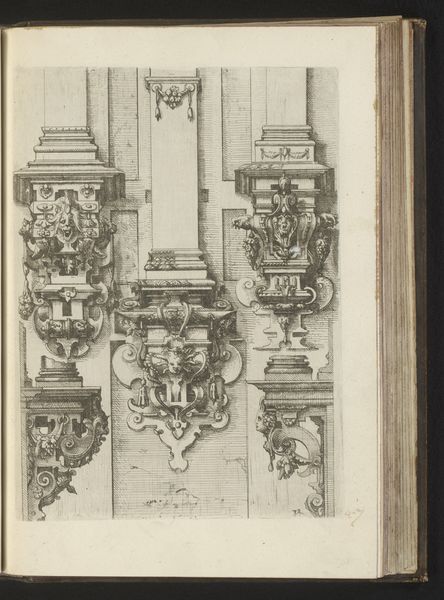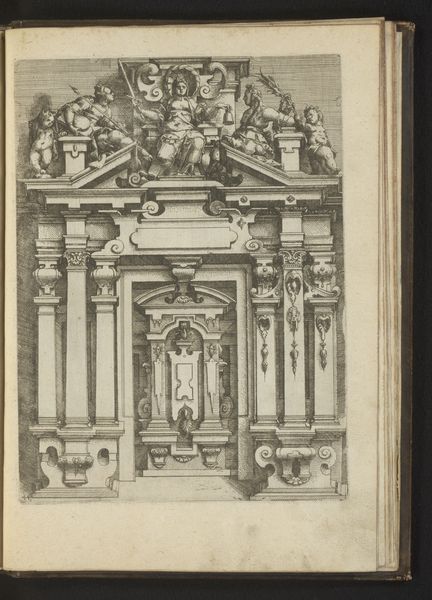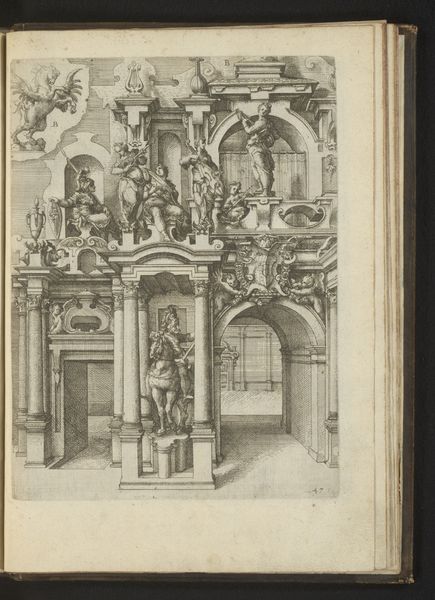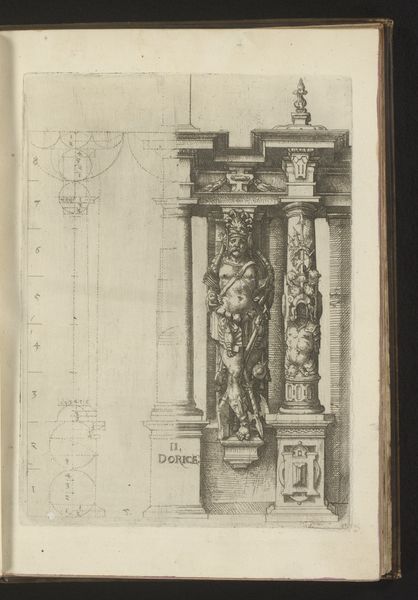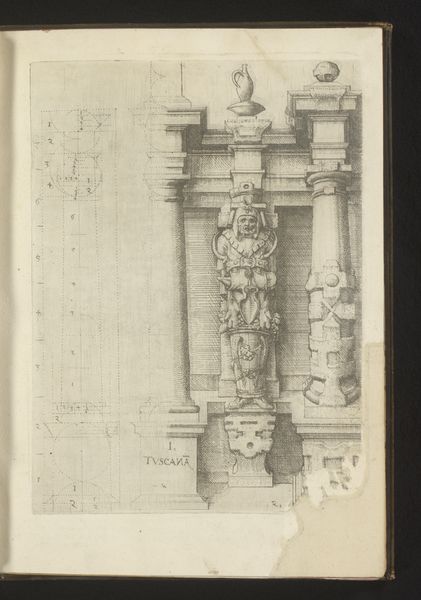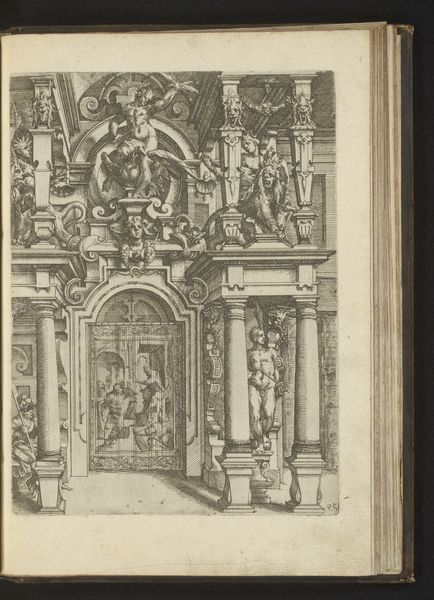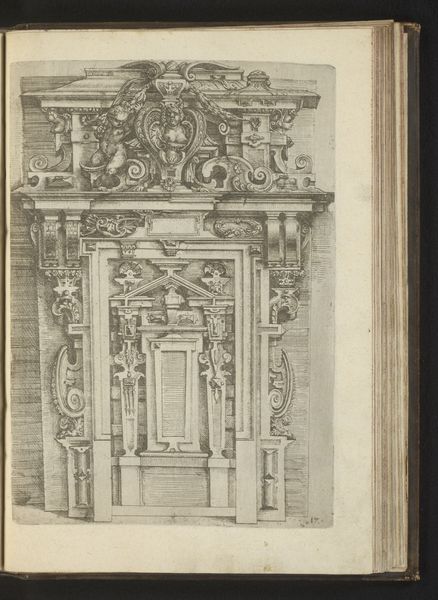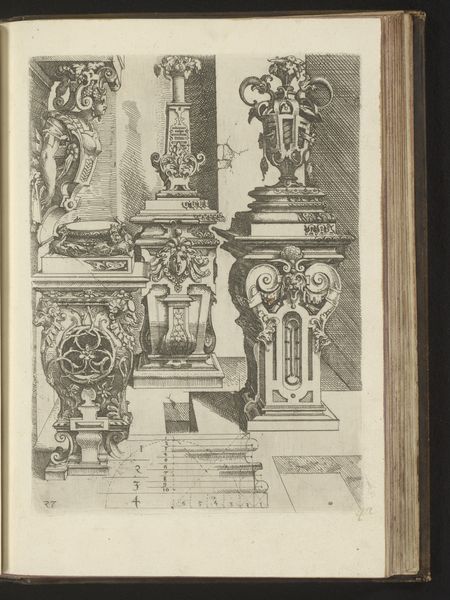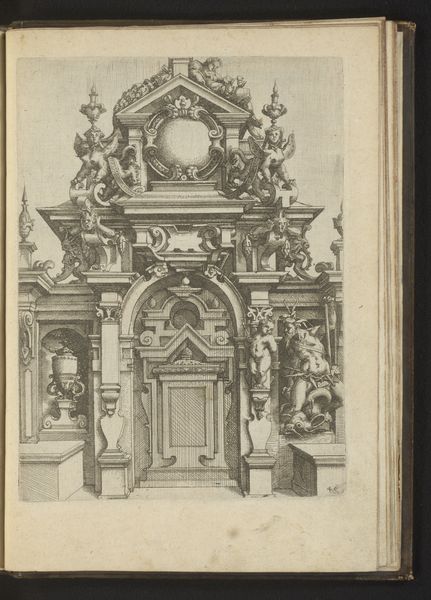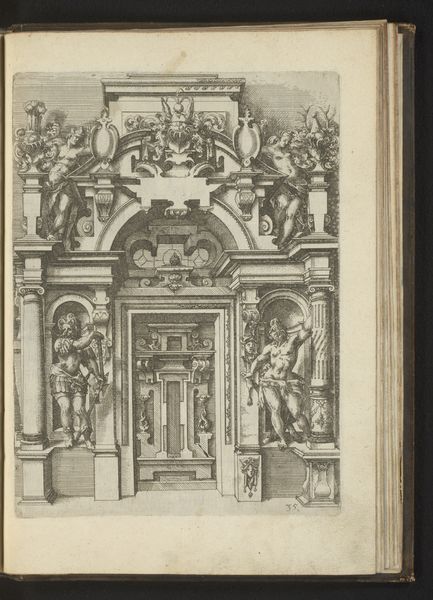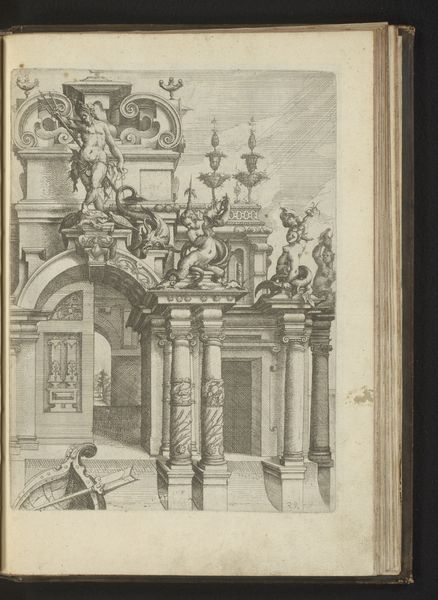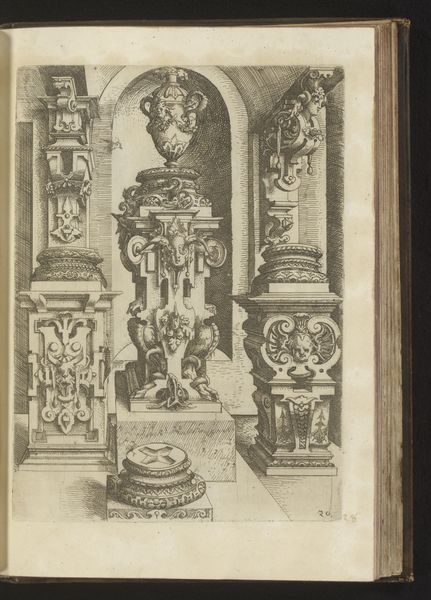
Verhoudingen van de composiete zuilenorde met een kariatide als pilaster tussen twee zuilen 1593 - 1595
0:00
0:00
drawing, paper, ink, architecture
#
drawing
#
paper
#
form
#
11_renaissance
#
ink
#
geometric
#
classicism
#
column
#
line
#
architecture
Dimensions: height 252 mm, width 183 mm
Copyright: Rijks Museum: Open Domain
Wendel Dietterlin created this etching, "Verhoudingen van de composiete zuilenorde met een kariatide als pilaster tussen twee zuilen" sometime in the late 16th century, as a demonstration of architectural principles. The image presents not just a design but a statement on the social order. Made in Germany, during a time of strict social hierarchies, Dietterlin's classical columns are less about aesthetics than they are about reinforcing established power structures. The composite order itself, blending Ionic and Corinthian elements, suggests an ambition to synthesize and control different cultural influences. The inclusion of a caryatid, a female figure serving as a column, further complicates the picture, as it embodies an aesthetic ideal deeply entrenched in Western culture. For us to truly understand Dietterlin's work, we need to consider the artistic and political contexts in which it was produced. Architectural treatises, like this one, functioned as a tool to shape both the physical and social environment. Examining period documents, architectural theory, and social histories can help us better understand the complex interplay of power, aesthetics, and social control in early modern Europe.
Comments
No comments
Be the first to comment and join the conversation on the ultimate creative platform.
